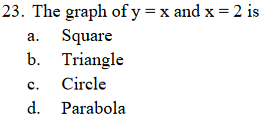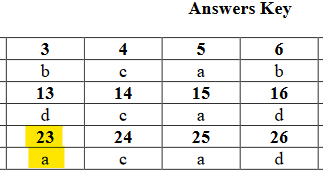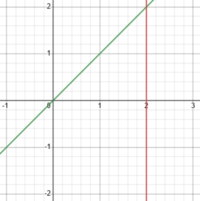Given y=x we have x=2 and y=2, but parts of those two lines only form square by including opposing parts of x-axis and y-axis. Did they instruct readers to include axis parts? Linked page didn't open for me.
Here is all it says:


Here, of course, is the actual graph:

Not exactly a square; triangle might make more sense.
I have no idea what they were thinking.
Having seen how bad this problem is, I looked through the problems and found another that is problematic:

This is utter nonsense as written; you
can't calculate the actual value of the median from the mode and mean!
What they expect the student to do is to use the
approximate relationship among these statistics that applies (approximately) for distributions that are skewed approximations of normal. (I haven't found a thorough explanation of the appropriate conditions beyond
this.)
This "rule" says:
(Mean - Mode) = 3 (Mean - Median)
3 Median = 2 Mean + Mode
Here, we find that (approximately!) Median = (2 Mean + Mode)/3 = (2*6 + 5)/3 = 17/3.
But in a real example, we might have data set 5, 5, 8, which gives Mean = 18/3 = 6, Mode = 5, and Median = 5, not 5 2/3.
If the problem had described a
distribution and asked for an
approximate median, then maybe the question would make sense (though I question the value of teaching this at all).
I've seen this before: Schools in certain places tend to teach overly precise rules in place of real understanding. I don't think I'd want to go to this school. There are other problems I could comment on, but I choose to stop here.




